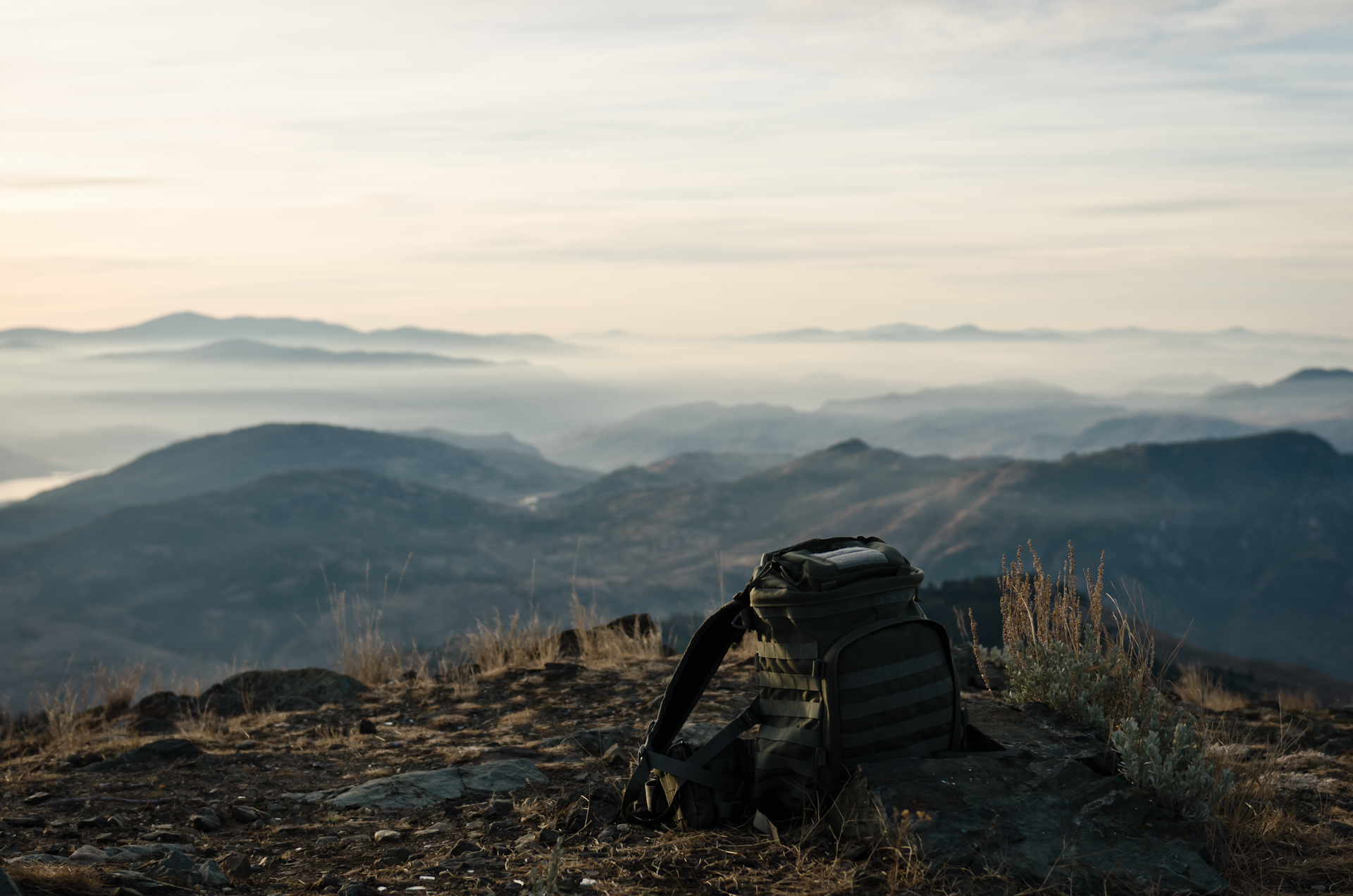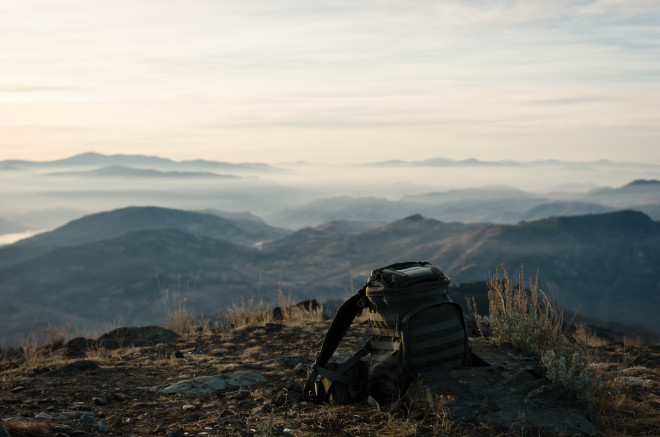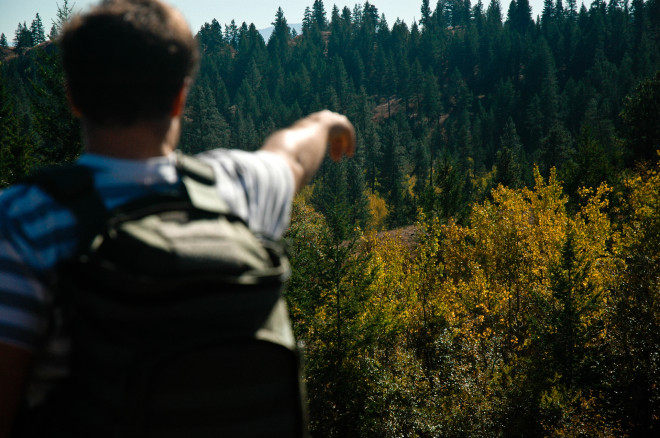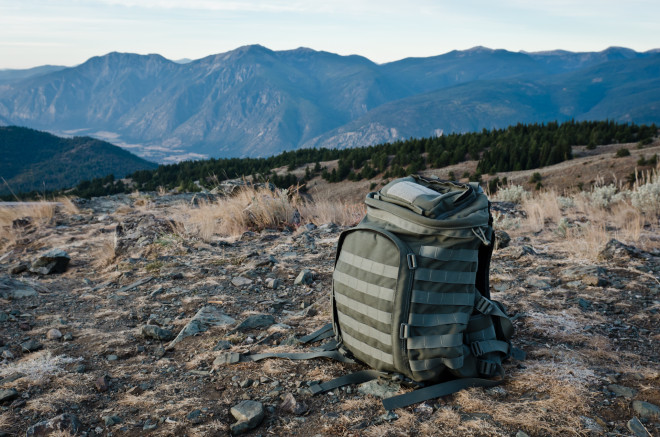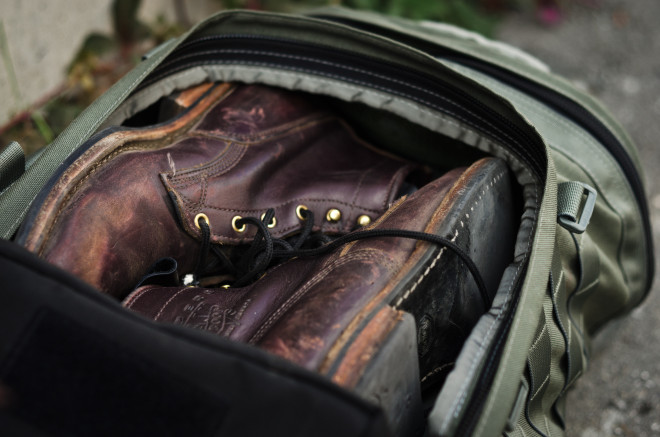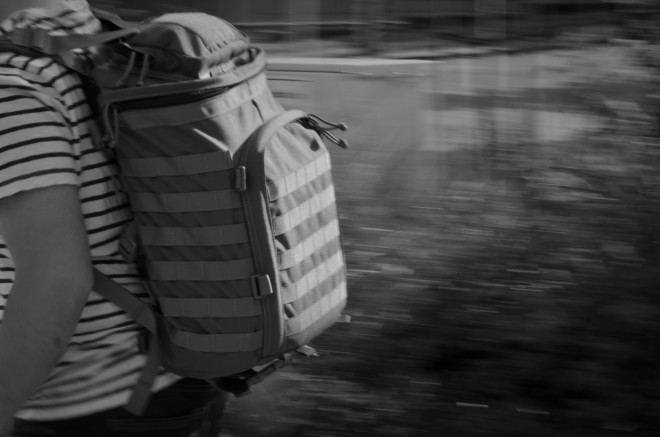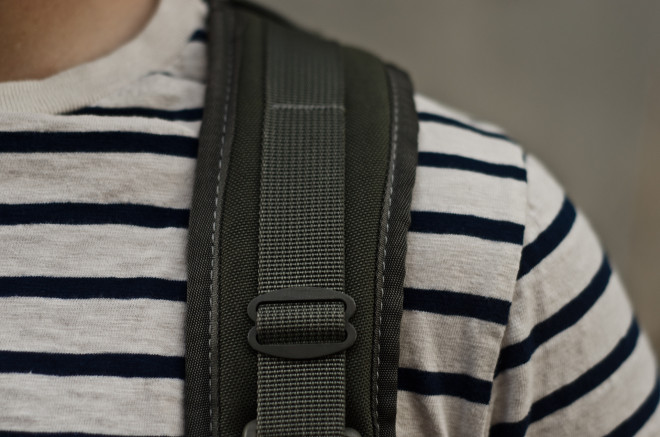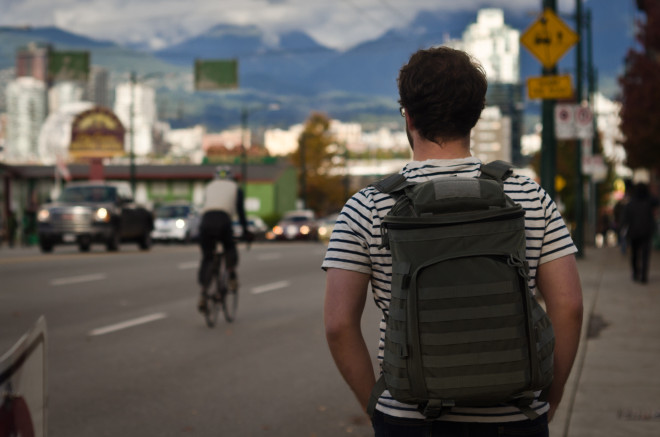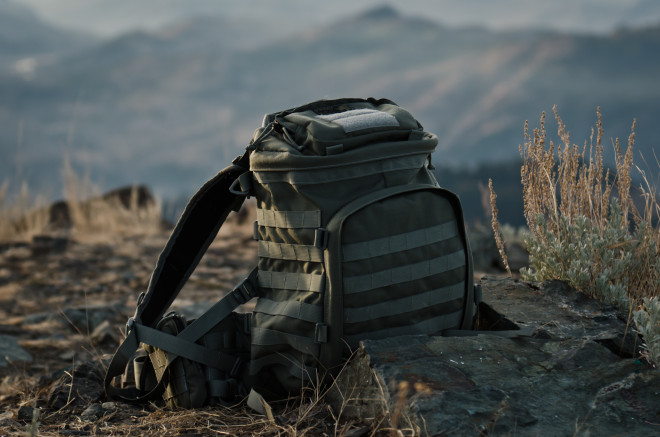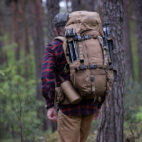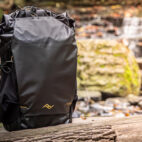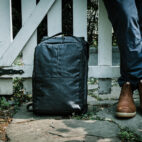Road Tests :: Kifaru X-Ray
Manufactured in Colorado using 100% American-made materials, Kifaru’s bags occupy hallowed ground in the the carry world. Between obsessive design work and relentless testing, they’ve built a passionate following among outdoors and military types. We put the X-Ray, their small-ish, tactical day pack, through a proper road test.
Mel Terkla, the designer behind Kifaru’s tactical lineup, spoke to us earlier this year and had a ton of great carry insight so I was excited to take their flagship X-Ray “small” tactical bag for an extended road test. I’m not one for suspense, so I’ll let you know two things right now:
- Kifaru’s approach to suspension makes the bag the most comfortable backpack I’ve ever worn
- The folks behind Kifaru couldn’t possibly have more integrity or passion for their work
I really can’t stress enough that Mel and the rest of the staff at Kifaru are impressive. During almost every conversation I’ve had with them they’ve encouraged criticism and wondered if I’d found any drawbacks to their design choices. Most of the companies we feature care about their stuff, but in an age of retail it’s rare and refreshing to experience people who are this deeply committed to their products.
Enough with the cuddly stuff, on with the review.
Vitals
- Make: Kifaru
- Model: X-Ray (in the Foliage colour with a Padded Omni-Belt + Power Pull, 2 Stash-it Pockets, & an Organizer)
- Price: $331 (bag only; the belt, pockets, & organizer sold separately)
- Place of Manufacture: Colorado (100% Berry Amendment Compliant)
- Specs: 1000 denier Cordura, 1800 cubic inches (29.5L), 4 lbs. 2 oz. (pack-only), interior hang loop for water bladder, access through top and front panel, accepts all MOLLE compatible pockets, ample PALS webbing allows pockets to be added to top, side and front
- Claims to Fame: military-grade toughness with advanced technical suspension design
The X-Ray is Kifaru’s approach to a small, tactical daypack/EDC bag, but it’s an incredibly versatile bag. The $331 price tag is no small sum, but it’s tempered by the fact that the bag can be adapted to a countless number of unforeseen future carry needs. I’ll go over the two setups that fit my needs best (below), but I have no doubt that whatever carry needs I have in the future, the X-Ray can probably deal with it.
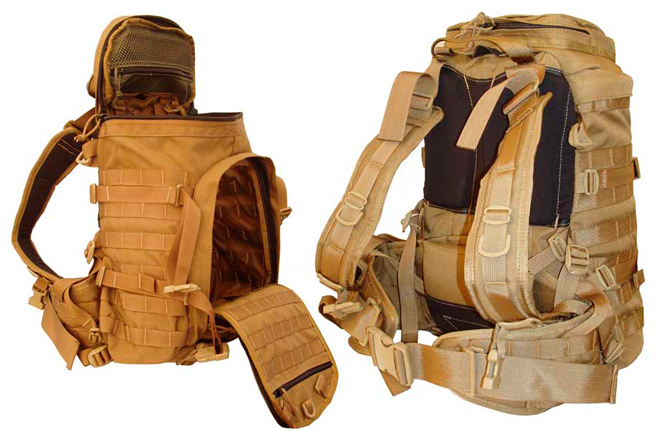
Suspension & Fit
Comfort the afflicted, and afflict the comfortable.
-Finley Peter Dunne
Kifaru’s approach to suspension is similar to most pack manufacturers’: transfer the weight of the pack onto your skeletal structure at the hips to take the load off your shoulder and back muscles. That being said, they achieve it in a unique, effective way. Instead of bulky waist-pads that just hold your backpack in place and don’t grip your hips evenly, they take the counter-intuitive route of using very flexible, lighter waist-belts (they call them “Omni Belts”) that grip very well, tighten with a 2:1 “power pull” system, and don’t slip down during use. Then they add two lumbar straps to pull the load of your pack close to your back instead of letting it hang backwards off your shoulders.
The final piece of the puzzle is the back panel. There’s no air-mesh or anything, just padding and aluminum (or carbon) stays to hold the bag’s structure. The stock bend in the aluminum stays is just about perfect for me, but Mel encourages people putting custom bends in their stays if needed.
It all adds up to the single most comfortable backpack I’ve worn. I have problematic shoulders that sublux easily and are quick to ache, but I haven’t once thought about them with the X-Ray, even carrying pretty heavy loads. Once the lumbar straps and chest-strap are adjusted properly, the shoulder-straps just hover over my shoulders and provide a super secure, comfortable fit.
Activity Bag Setup
“I sure am glad I didn’t bring all that useful stuff.”
-Nobody, ever
Putting together an activity/emergency/bug-out/doing stuff bag is an interesting task. I’m not worried about a zombie apocalypse and I’m not a government conspiracy type, but I do live in Vancouver, British Columbia where there are intermittent scientific warnings about an earthquake disaster that would destroy the city; so, putting together a survival pack isn’t just an exercise in paranoia.
After a lot of experimentation, my X-Ray spends most of its time set up with the waist-belt attached, Stash-it pockets installed on the belt, and the hydration compartment empty and ready to carry a Camelbak 3L bladder whenever we’re heading out to do stuff. I keep a knife, flashlight, Leatherman, first-aid kit, pen, notepad, a lighter, hand-i-wipes, and bike multi-tool in the Stash-it pockets. (After the Mad Max gasoline wars I’ll make my way as a bicycle mechanic) This way all the sharp, TSA unapproved stuff is on the belt, which comes off in seconds for last-minute stowing in my checked luggage — no more rummaging around the bag trying to remember whether I took the knife out.
I keep a dry bag compression-strapped to the bottom of the main compartment, and it holds spare wool socks, a base layer, emergency blanket, matches, flashlight batteries, and some water purification tablets. The blast & cast crowd might get picky about my contents choices as a strict “bug-out-bag”, and I’d love to hear everyone’s thoughts on refining what I carry; that being said, I’m what’s known as “prey” in the wild, and won’t be needing a concealed carry setup anytime soon.
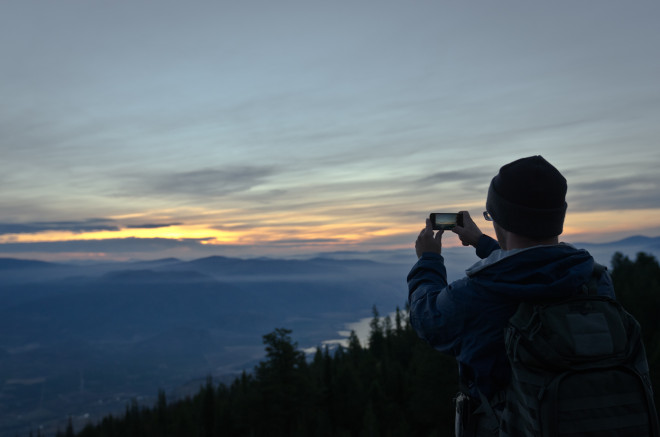
Figuring out where the sun will come up; the Sun Seeker app is a photographer’s best friend.
The X-Ray with this setup has become my activity bag, happy to come along for the ride with whatever I’m doing. Even with all those permanent contents, you can pack in in a day or two worth of clothes, a camera, toiletries, etc. and there’s still enough room to bring home weird momentos from whatever adventures you go on. Despite being fairly heavy, the pack is so comfortable that I don’t think twice about carrying all these “unnecessary” things on a daily basis. And, even though the zombies haven’t risen up yet, I’ve been thankful for my stuff whether I’m hauling binders full of notes around town, going on an impromptu camping trip, or hiking up a mountain to test a new cable-cam rig.
EDC Setup
“I just travel the world with my backpack and my cameras and a bunch of Clif bars”
-Henry Rollins
I suspect that many readers of this site are interested in the X-Ray’s every-day carry abilities, but out of the box the X-Ray lacks a lot of the organizational features you’ll find in more dedicated EDC bags. While it does have a great internal mesh zippered pouch and an external lid-pocket, it doesn’t have the (unfortunately named) “Flashlight Cave” or abundant external zip pockets of the TAD FAST Pack EDC, it doesn’t have the padded laptop compartment of a Goruck GR1, and it doesn’t have the compartmentalized organization of a Tom Bihn Brain Bag.
Though it might sound like the X-Ray’s lack of features makes it a non-starter for EDC, I found setting the bag up exactly how I wanted it very rewarding. I took off the waist belt and Stash-its as they interfere with cycling; I also took off all the compression straps and pulled out the aluminum stays as they’re not really functional without the load-bearing waist belt. Then I put a Tom Bihn Vertical Brain Cell laptop sleeve into the hydration compartment (I got the 13″ VBC and it fits perfectly, the bigger ones wont fit so if you’ve got a bigger laptop use a slimmer sleeve), and removed the chamber pocket for easy laptop access. Lastly, I installed Kifaru’s Organizer admin pocket on the inside of the front panel (no sense in having exposed zips if speed isn’t your #1 concern).
With this setup I carry a 13″ Macbook Pro in the hydration compartment, iPad in the front panel slash-pocket, chargers/connectors/cords/etc. in the mesh zippered pouch, pens/glasses/notebook/etc. in the Organizer, and my phone & headphones in the top pocket for easy access. The main compartment then usually gets stuffed with a book or two, a camera or two, and maybe a sweater now that the weather is getting cooler up here in the PNW. Stacking a bunch of things on top of eachother might sound like a great way to get frustrated trying to get at your stuff, but the combination of separate top and front panel access makes accessing everything in the bag quite easy.
Shortcomings?
Despite being versatile, the X-Ray won’t be for everyone. Its fairly shallow 12” depth is no-doubt designed to keep the bag’s load close to you instead of pulling backwards on your shoulders and back, but this lack of main-compartment depth may limit the amount of school-related stuff you can jam into the bag.
Similarly, the X-Ray’s lack of dedicated features is great if you’re weird & obsessive about bags (sounds familiar…), but all those accessories cost money and take time to get right. Plus, I still wish it had a way to store a water bottle when my laptop is in the hydration compartment without strapping something ugly and bulky to the outside of the bag.
Visually, I’m okay with the tech look, even for EDC, but those wanting to keep a lower profile in urban settings might find all the PALS webbing and compression straps a bit much.
On a more specific note, the Stash-it pockets on the Omni Belt would be more easily accessible while the pack is on if they zipped further down and then folded open. Tactical folks likely prefer security of their gear to city-slicker easy access, so I don’t begrudge this point a ton.
Finally, the company doesn’t have enough literature on their suspension philosophy, setup, and fit. Mel is incredibly generous with his time in helping me set up the bag—in fact, he’s equally generous with his time and has a toll-free line direct to his house available 24/7 to all his customers—, but a simple set of instructions would go a long way towards explaining their suspension philosophy to prospective buyers, and help their customers get their bags set perfectly for them.
Conclusions
Pros:
- suspension system is perfect
- bombproof, Made-In-America construction & materials
- ridiculously versatile for both EDC and more active duty
- great attention to detail and design
- company displays a ton of integrity
Cons:
- tactical look may be too much for some
- shallow depth limits capacity for carrying books and other bulky loads
- lack of stock organizational features both a blessing and a curse
- not enough online literature for setup
Ideal if you:
- want one bag that can do a variety of things and is relatively future-proof
- have shoulder/back problems but still need to carry heavy stuff
- are worried about the government taking your tinfoil hat collection
Not ideal if you:
- are a starving student (spend less money on a deeper, squarer, sleeker bookbag like a Fjallraven Kanken)
- don’t want people to know you’re capable of killing them 12 ways with a paperclip (spend marginally less money and buy a GR1 or similar)
The Final Word
In case you couldn’t tell, this bag comes highly recommended, provided it’s in the vein of what you’re looking for. Personally, the sheer comfort provided by the suspension system makes it my #1 go-to bag. I’ll be working on trying to fit a camera padding setup into it for backcountry photo/video shoots, and it’ll be my benchmark for backpack suspension going forward.
The Kifaru X-Ray is the best backpack I’ve ever used.
Review by Brian Park. Photos by Brian Park & Kate Masri. Read more about the X-Ray on the Kifaru website.





 Carry Awards
Carry Awards Insights
Insights Liking
Liking Projects
Projects Interviews
Interviews
